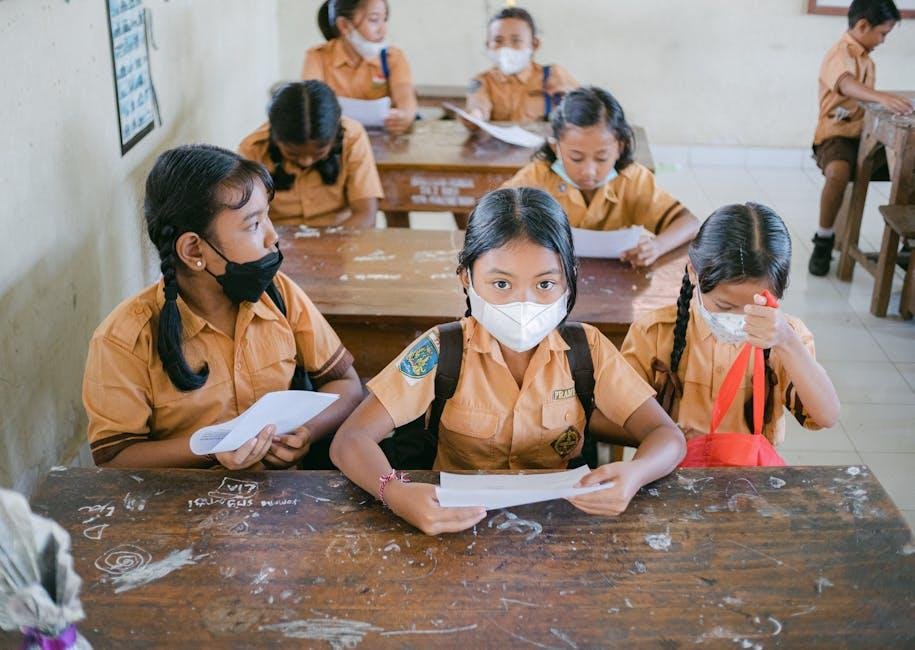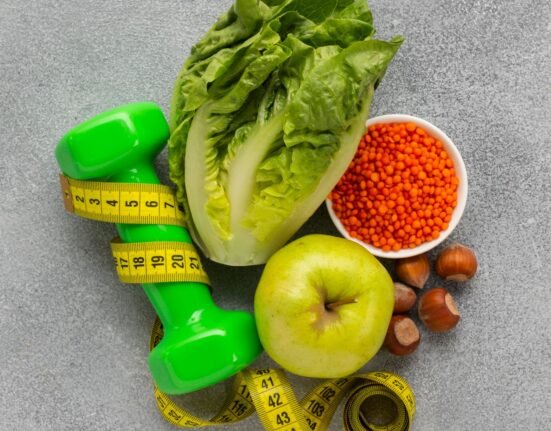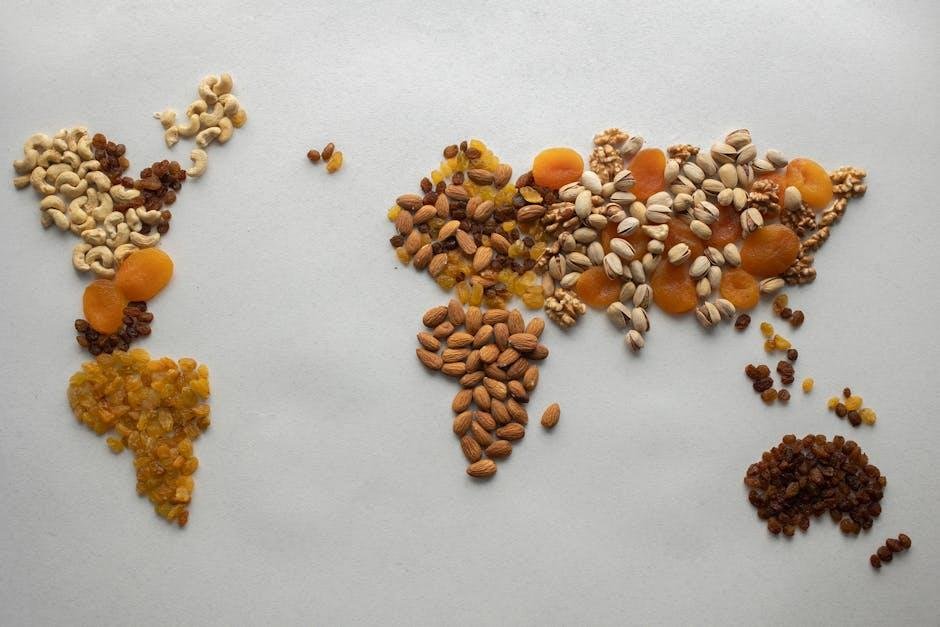Throughout history, pandemics have reshaped societies in profound ways, leaving indelible marks on health, economy, and daily life. Among the many facets affected, global nutrition stands as a critical yet often overlooked dimension. When a pandemic strikes, it disrupts food systems, alters consumption patterns, and challenges the delicate balance of access to essential nutrients. This article delves into the intricate relationship between pandemics and nutrition, exploring how these crises influence what we eat, who gets enough to eat, and the long-term implications for worldwide health and well-being. By understanding these impacts, we can better prepare to safeguard nutrition in the face of future global health challenges.
Table of Contents
- The Disruption of Food Supply Chains During Global Health Crises
- Nutritional Inequities Exacerbated by Pandemic Conditions
- The Role of Public Health Policies in Safeguarding Food Security
- Innovations in Food Distribution and Access Amidst Pandemics
- Mental Health and Its Subtle Influence on Dietary Choices
- Strategies for Building Resilient Nutrition Systems Post-Pandemic
- Q&A
- In Summary

The Disruption of Food Supply Chains During Global Health Crises
During global health emergencies, logistical challenges ripple through every corner of the food supply chain. From farm fields to urban supermarkets, restrictions on movement, labor shortages, and fluctuating demand patterns strain the system, making fresh produce and essential staples scarce commodities. The intricate dependencies between production, transportation, and retail highlight vulnerabilities that can leave millions facing nutritional deficits. This cascading effect often forces communities to rely on emergency rations or less nutritious alternatives, undermining efforts toward balanced diets.
- Farm labor disruptions: Illness and quarantine measures reduce workforce availability, affecting planting and harvesting cycles.
- Transport bottlenecks: Border closures and limited freight options delay deliveries and increase costs.
- Market volatility: Sudden surges or drops in demand create waste and shortages simultaneously.
To illustrate the impact more clearly, the table below summarizes the effects observed during recent health crises:
| Supply Chain Stage | Common Disruption | Nutrition Impact |
|---|---|---|
| Production | Worker absenteeism | Reduced harvests, less variety |
| Processing | Factory shutdowns | Lower food availability |
| Distribution | Transport delays | Expired or spoiled goods |
| Retail | Stock shortages | Price spikes, limited choices |

Nutritional Inequities Exacerbated by Pandemic Conditions
Throughout history, pandemics have revealed and intensified underlying disparities in access to nutritious food, hitting vulnerable populations the hardest. Job losses, disrupted supply chains, and rising food prices collectively created a perfect storm that widened the gap between those with stable resources and those without. Essential nutrients became scarce for many, especially children, pregnant women, and elderly individuals in marginalized communities, compounding pre-existing health challenges and stunting recovery efforts.
Community support systems and government assistance programs struggled to keep pace with the sudden surge in need, exposing chronic underfunding and inequitable distribution mechanisms. The following table summarizes some of the key factors exacerbating nutritional inequities during pandemics:
| Factor | Impact on Nutrition Access |
|---|---|
| Supply Chain Disruptions | Reduced availability of fresh produce |
| Income Loss | Decreased purchasing power for nutritious food |
| Healthcare System Strain | Limited nutritional support for high-risk groups |
| School Closures | Loss of free or subsidized meal programs |
- Food insecurity surged in urban slums and rural areas alike, often forcing families to rely on calorie-dense but nutrient-poor options.
- Policy responses varied widely, but gaps in coverage left millions without reliable access to essential nutrients.

The Role of Public Health Policies in Safeguarding Food Security
Public health policies serve as the backbone in the fight to maintain stable food systems, especially amid crises. Strategic interventions like food assistance programs, nutritional guidelines, and emergency response systems are crucial in addressing both immediate shortages and long-term vulnerabilities. These policies push for greater coordination among governments, communities, and international bodies to ensure equitable access to nutritious food. Critical measures include:
- Implementing food distribution networks that reach marginalized populations
- Supporting local agriculture through subsidies and resource allocation
- Enforcing food safety protocols to prevent contamination during pandemics
- Promoting nutritional education to enhance community resilience
To illustrate the impact of such policies, consider the following comparative data on food insecurity rates before and during a pandemic when effective public health strategies were applied:
| Region | Pre-Pandemic Food Insecurity | During Pandemic with Policies | During Pandemic without Policies |
|---|---|---|---|
| Urban Areas | 12% | 15% | 28% |
| Rural Areas | 18% | 22% | 40% |
| Coastal regions | 14% | 17% | 33% |
These figures underscore the critical role that thoughtful, proactive policies play in shielding vulnerable populations from the worst nutrition-related consequences during global upheavals. They are a testament to the power of governance fused with public health insight in preserving food security.

Innovations in Food Distribution and Access Amidst Pandemics
During recent global health crises, traditional food supply chains have faced unprecedented disruptions, prompting a swift evolution in the methods used to deliver nourishment to communities. Technologies such as blockchain and AI-driven forecasting have been pivotal, ensuring transparency and efficiency in the distribution of perishable goods while reducing waste. Simultaneously, local food networks have gained momentum, championing community-supported agriculture (CSA) and urban farming initiatives that brought fresh produce directly to consumers. These innovations have not only enhanced resilience but have also fostered a renewed appreciation for sustainable, localized food systems.
Access equity has become a critical focus, with governments and NGOs collaborating on innovative programs to reach vulnerable populations amid lockdowns and movement restrictions. Digital platforms and contactless delivery services have emerged as lifelines, connecting families to essential food resources with minimal risk. The table below highlights some of the most prominent innovations reshaping food distribution during pandemics:
| Innovation | Primary Benefit | Example |
|---|---|---|
| AI & Blockchain Integration | Supply chain transparency & efficiency | Traceable organic produce delivery |
| Community-Supported Agriculture | Direct farm-to-table connection | Local vegetable box subscriptions |
| Contactless Digital Delivery | Minimized health risks in access | App-based grocery drop-offs |
| Urban Farming Initiatives | Localized fresh food production | Rooftop gardens & hydroponics |

Mental Health and Its Subtle Influence on Dietary Choices
Mental well-being quietly shapes our eating habits in ways often overlooked. Stress, anxiety, and depression—which have surged during pandemics—can trigger cravings for comfort foods high in sugar, salt, and fat, disrupting otherwise balanced diets. Conversely, some individuals experience a loss of appetite or indifference toward food, leading to insufficient nutrient intake. This emotional tug-of-war frequently results in inconsistent meal patterns that ripple through overall nutritional status, creating a complex interplay between psyche and sustenance.
Key psychological factors influencing dietary choices include:
- Emotional Eating: Seeking solace in food as a coping mechanism.
- Appetite Fluctuations: Variations ranging from overeating to neglecting meals.
- Food Accessibility Perceptions: Anxiety about supply shortages affecting meal planning.
| Mental State | Common Dietary Response | Potential Nutritional Impact |
|---|---|---|
| Heightened Anxiety | Increased snacking on processed foods | Higher intake of empty calories |
| Depression | Reduced meal frequency | Risk of micronutrient deficiencies |
| Stress | Preference for high-sugar comfort foods | Imbalanced macronutrient consumption |
Understanding this subtle influence empowers us to promote strategies that support both mental health and nutritional balance, especially during the uncertainties brought by global health crises.

Strategies for Building Resilient Nutrition Systems Post-Pandemic
To fortify nutrition systems against future disruptions, it is essential to embrace adaptive agriculture and supply chain innovations. This includes promoting climate-resilient crops, decentralizing food production hubs, and leveraging technology to predict and respond to demand fluctuations. Empowering local communities with knowledge and resources not only boosts food sovereignty but also reduces reliance on vulnerable global networks. Investments in diversified farming practices and strengthening smallholder farmers’ access to markets create buffer zones that cushion shocks and maintain steady nutritional flows.
Equally important is fostering cross-sector collaboration and robust policy frameworks focused on equity and sustainability. Governments, private sectors, and civil society must coordinate efforts to ensure that food systems are inclusive and responsive to vulnerable populations’ needs. Implementing digital monitoring tools alongside social protection programs can track food security indicators and trigger timely interventions. Key strategies include:
- Integrating nutrition-sensitive agriculture policies to enhance dietary diversity.
- Investing in cold-chain infrastructure to minimize food loss and ensure perishable items’ availability.
- Building resilience through diversified income streams that reduce household vulnerability during crises.
| Strategy | Benefit | Key Stakeholders |
|---|---|---|
| Climate-resilient crops | Increase yield stability | Farmers, Researchers |
| Decentralized food hubs | Reduce supply chain risks | Local Governments, Cooperatives |
| Digital monitoring tools | Real-time food security data | Policy Makers, NGOs |
Q&A
Q&A:
Q1: How do pandemics influence global nutrition?
A1: Pandemics disrupt food systems worldwide by affecting supply chains, limiting access to fresh and nutritious foods, and increasing poverty and unemployment. These challenges can lead to malnutrition, both undernutrition and obesity, as people struggle to maintain balanced diets amid scarcity and economic strain.
Q2: Why is nutrition particularly vulnerable during pandemics?
A2: Nutrition is vulnerable because food security depends on steady production, distribution, and consumption. Pandemics can trigger lockdowns, labor shortages, and transport delays, breaking these links. Additionally, healthcare resources shift focus to managing disease outbreaks, often sidelining nutrition programs and interventions.
Q3: Which populations are most affected by nutritional disruptions during pandemics?
A3: Vulnerable groups such as children, the elderly, low-income families, and those with pre-existing health conditions bear the brunt. In low- and middle-income countries, where social safety nets are weaker, malnutrition rates often spike more sharply.
Q4: Can you give examples of nutritional issues that arise in pandemic contexts?
A4: Yes, typical issues include famine-like scenarios due to food shortages, micronutrient deficiencies from limited diet variety, and rising obesity from reliance on cheap, processed foods. Psychosocial stress can also alter eating habits, compounding the problem.
Q5: How have recent pandemics demonstrated the relationship between health crises and nutrition?
A5: The COVID-19 pandemic vividly illustrated how a health crisis can cascade into a nutrition crisis. Lockdowns disrupted markets and incomes, school closures halted feeding programs, and healthcare systems were overwhelmed, worsening nutritional outcomes globally.
Q6: What strategies can mitigate the nutritional impact of pandemics?
A6: Strategies include strengthening local food production, ensuring supply chain resilience, expanding social protection schemes, maintaining nutrition services as essential, and promoting diversified diets. International cooperation and data-driven policies are also crucial for timely, targeted responses.
Q7: Why is addressing nutrition during pandemics important beyond immediate health outcomes?
A7: Because nutrition fundamentally influences immune function and recovery, poor nutrition can worsen disease severity and prolong outbreaks. Long-term developmental consequences, especially in children, can affect productivity and economic growth, deepening inequalities.
Q8: How can individuals contribute to improving nutrition resilience during pandemics?
A8: Individuals can support local farmers, choose nutrient-rich foods when possible, minimize food waste, and stay informed about nutrition guidelines. Community initiatives such as food sharing and education also foster collective resilience.
Q9: What lessons have pandemics taught us about global nutrition?
A9: Pandemics have underscored the interconnectedness of health, food systems, and economic stability. They reveal weaknesses in preparedness and highlight the urgency of integrated approaches that prioritize nutrition as a cornerstone of public health.
In Summary
As the world continues to navigate the intricate aftermath of pandemics, the thread connecting health and nutrition becomes ever more apparent. These global upheavals serve as stark reminders that the nourishment of populations is not merely a matter of food availability but a complex interplay of economics, access, and resilience. By understanding the profound impacts pandemics impose on global nutrition, we can better equip ourselves to build systems that withstand crises—transforming vulnerability into opportunity. In the delicate dance between disease and sustenance, the lessons learned today will shape the wellbeing of generations to come.















Leave feedback about this